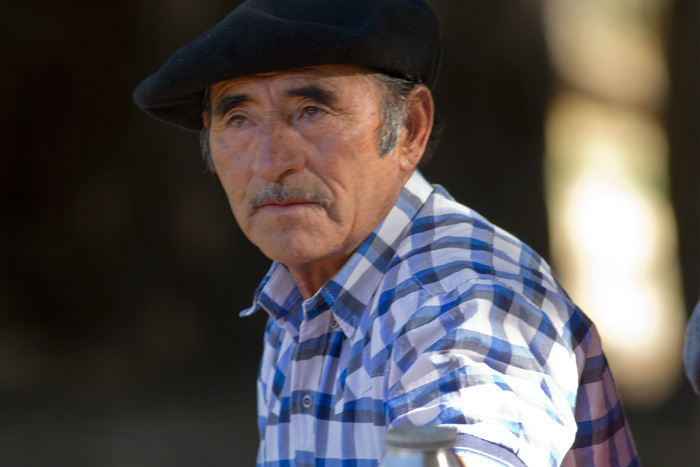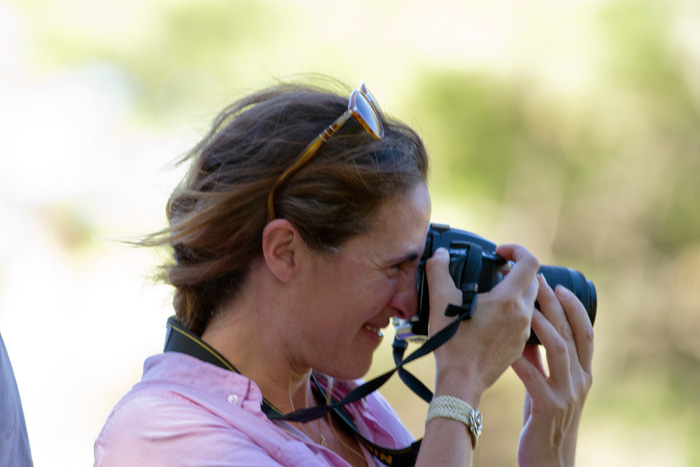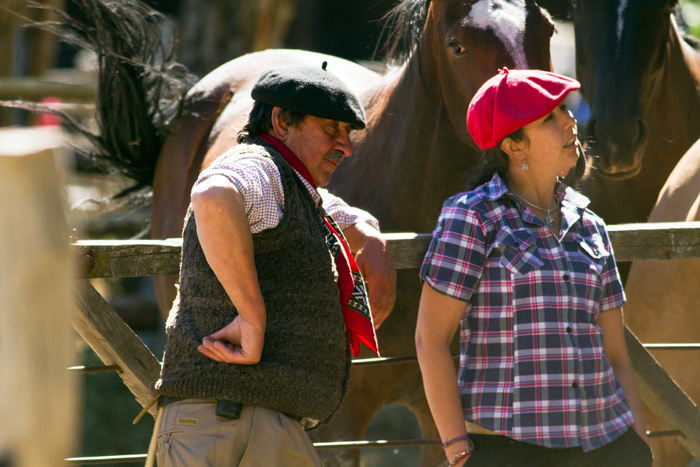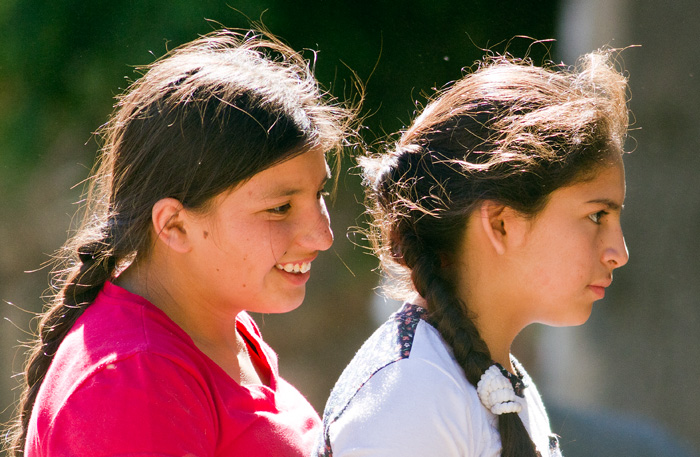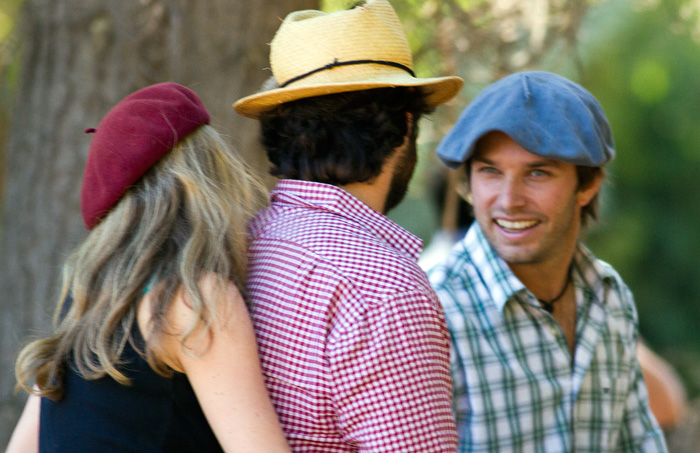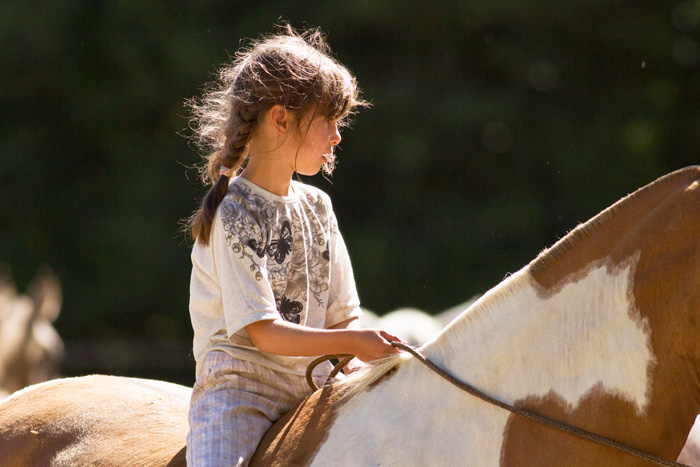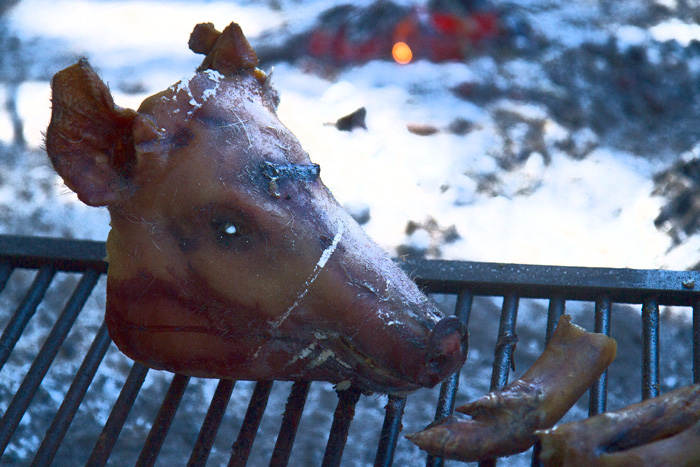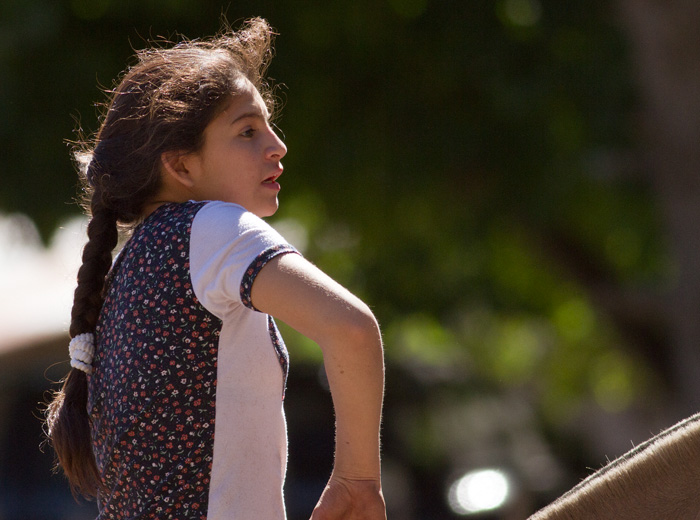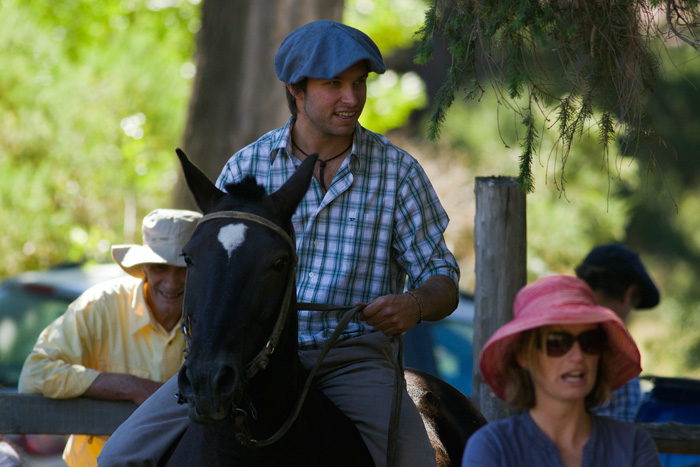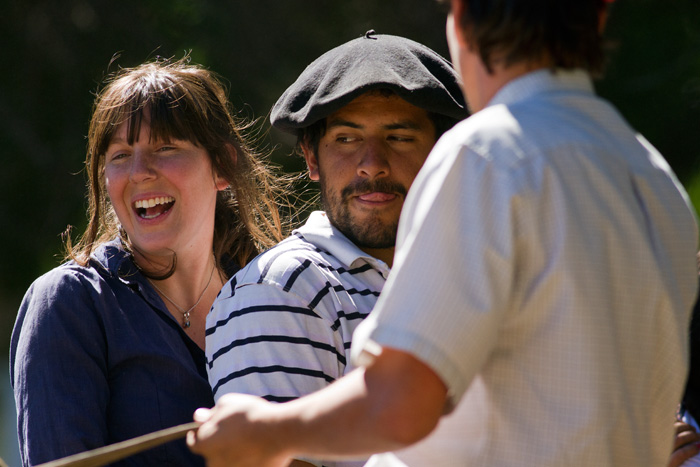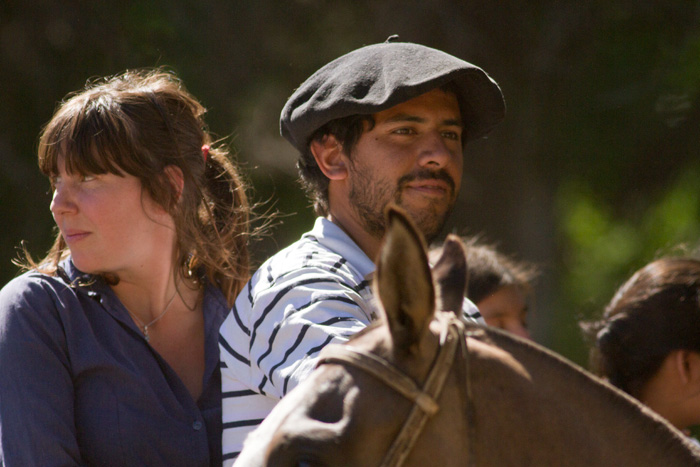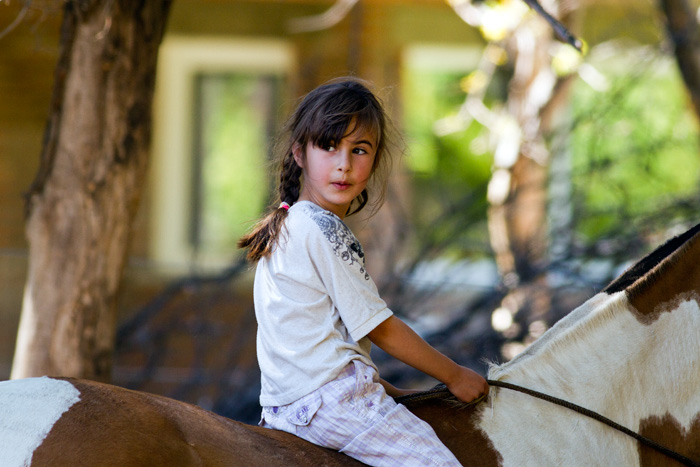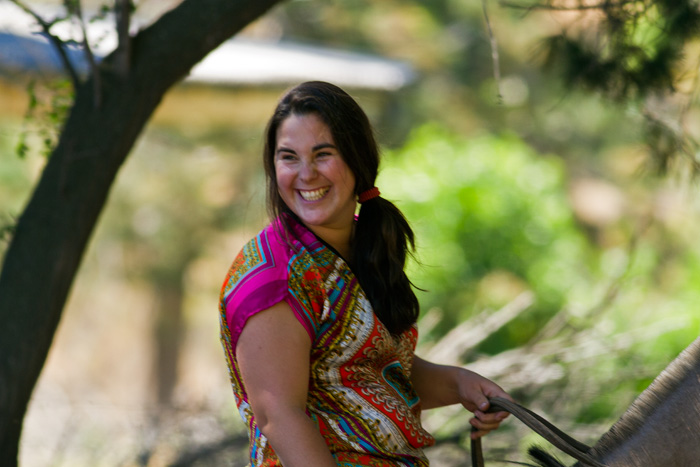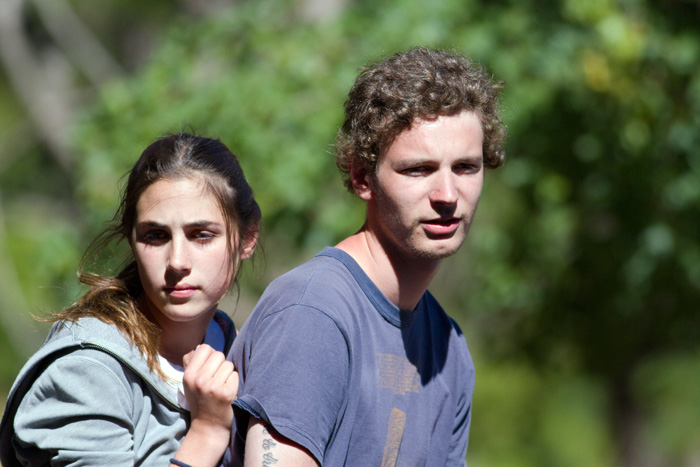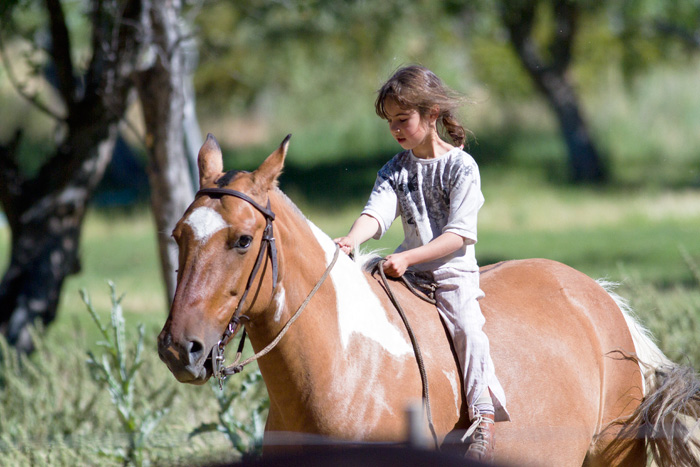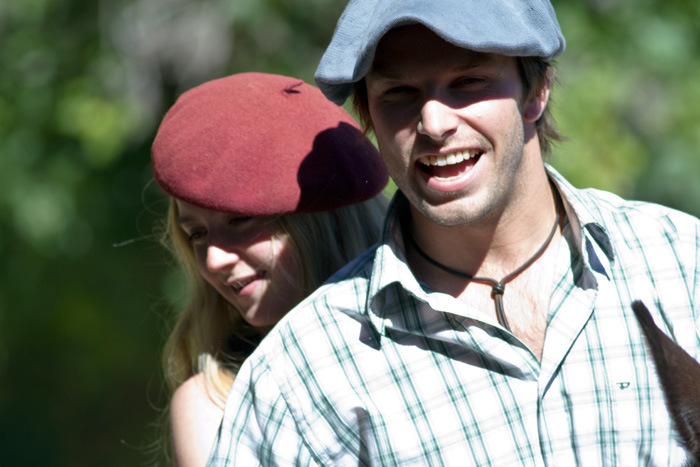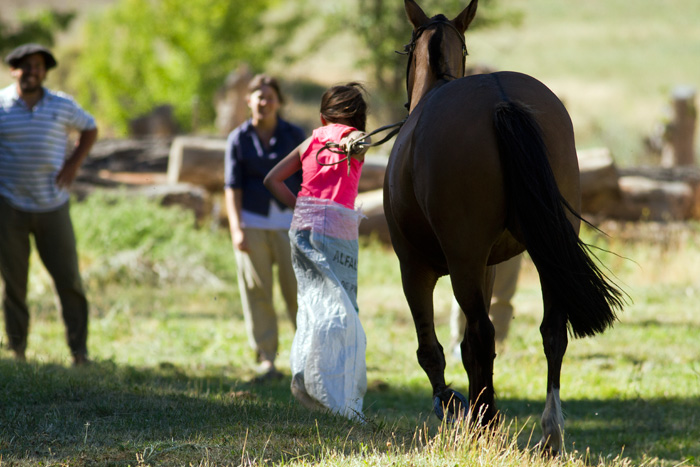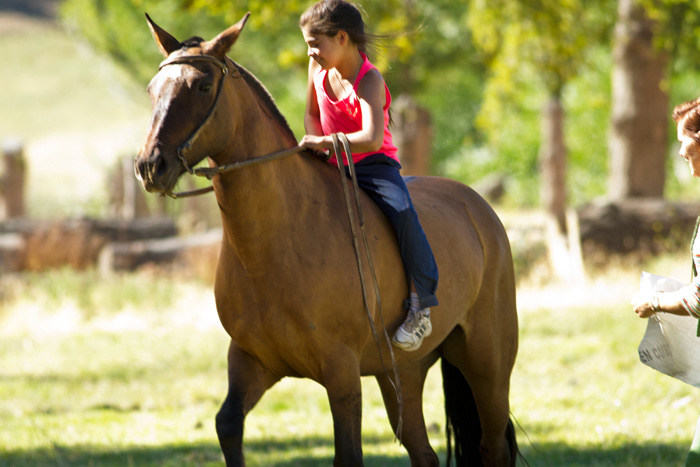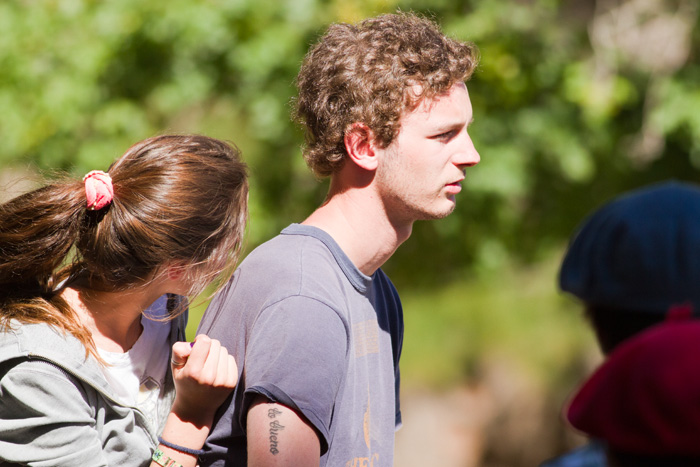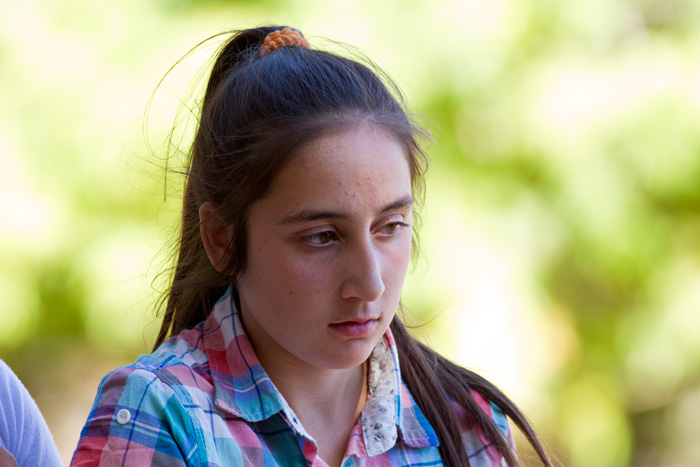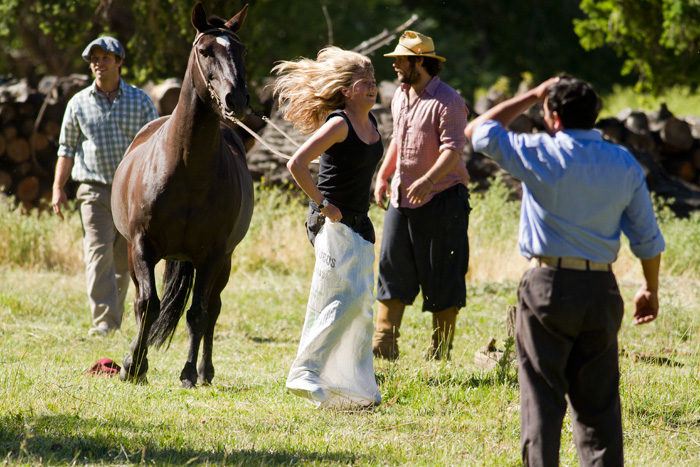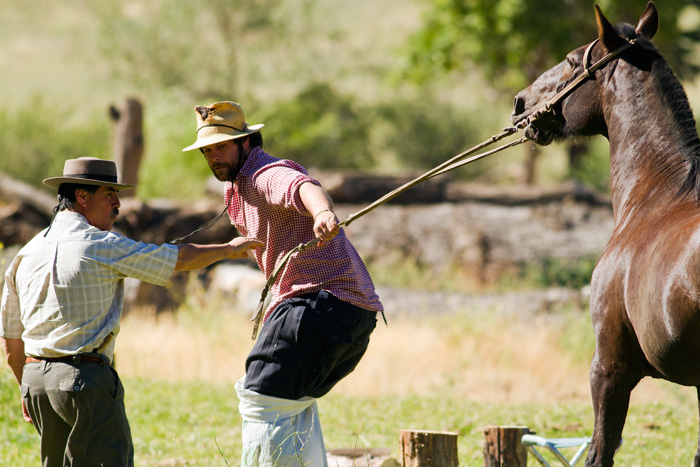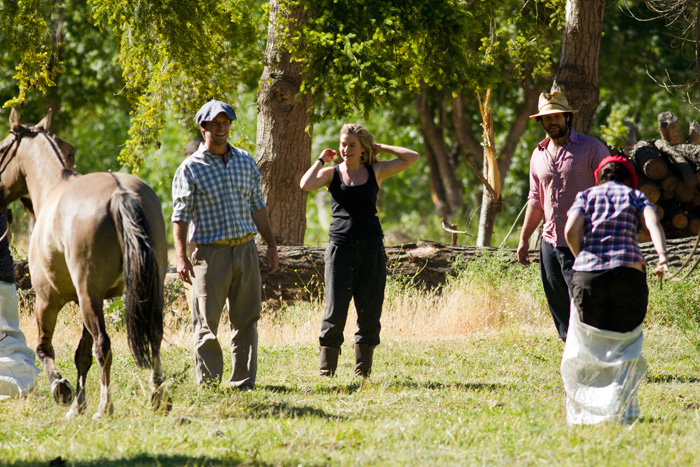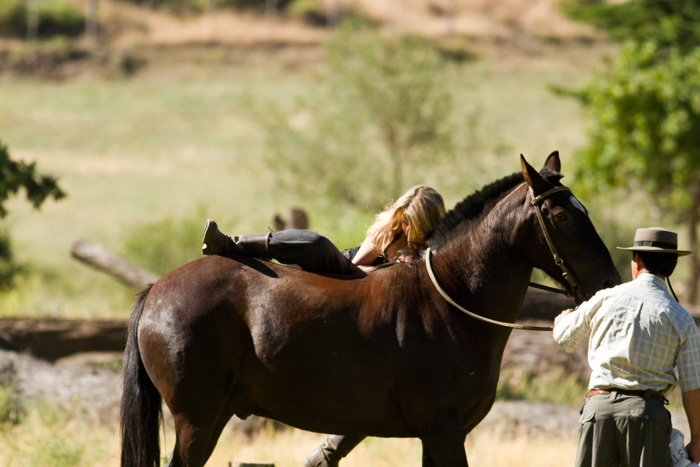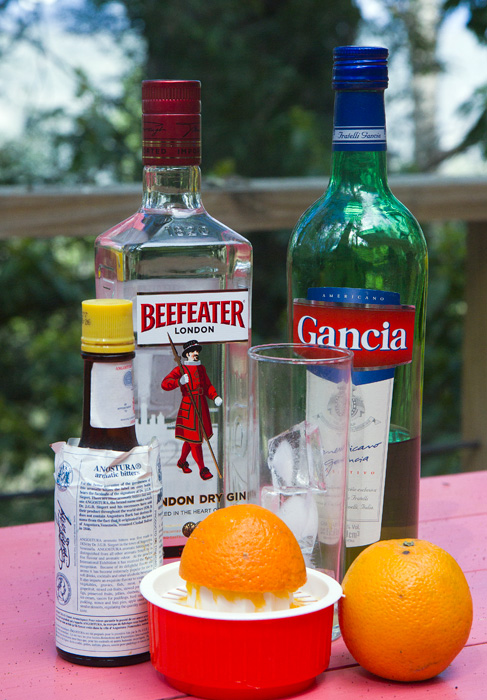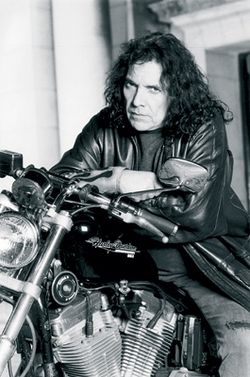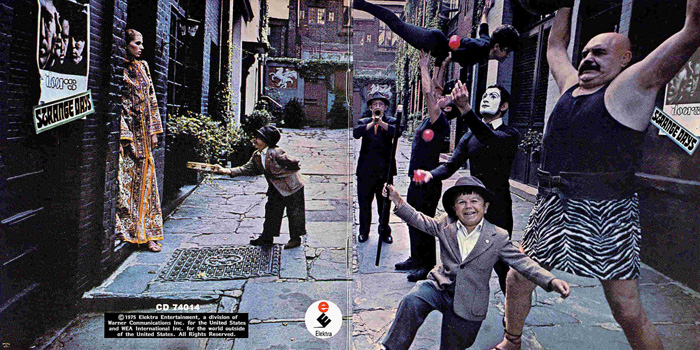In Patagonia Welsh is spoken with a Spanish lilt, and the guitar and the asado, the gaucho and the siesta are part and parcel of Welsh Argentine culture.
Conception and settlement
Let me take you back in time, to the early 1800’s. In the Welsh heartlands industry is developing and rural communities are slowly beginning to fragment. We are well into the Industrial Revolution, with its constant demands for coal, slate, iron and steel. Wales was a natural provider of these, and as such it was felt by many that the country was gradually being absorbed into England. This was not what all Welsh people wanted, and the minds of some turned to thoughts of a new start in a new world.
In fact, Welsh emigrants had already attempted to set up Welsh speaking colonies overseas but had had great difficulty in retaining their cultural identity. This was because they had tried in English speaking communities – mainly in the US – where they came under pressure to use the English language and adopt the ways of another emerging industrial culture. Inevitably, these new immigrants soon became fully assimilated into the American way of life, losing their language and culture in the process. This was not what many were looking for.
Enter a certain Michael Jones, an ordained minister who had lived in the United States for two years and formed a vision of establishing an ‘independent’ Welsh settlement, free from English and American influences. He –and his followers– believed that their language, religion and way of life were being oppressed by the English ruling class, and he invested a large amount of time and money in a new ‘Patagonian project’.
Michael Jones had been in touch with the Argentine government about the possibility of settling an area in Patagonia where Welsh immigrants would be able to preserve their language, culture and traditions. Granting such a request suited the Argentine government well, as this would put them in control of a large tract of land which was then the subject of dispute with their Chilean neighbours. This was within the framework of the great European immigration, which colonized Argentina and other countries in the second half of the nineteenth century. But the Argentine government were not so keen on relinquishing ownership of the land, as we shall see.
A Welsh emigration committee met in Liverpool and published a handbook, Llawlyfr y Wladfa, to publicise the Patagonian scheme. The handbook was widely distributed throughout Wales, and also in North America. The first group of would-be settlers consisted originally of nearly two hundred people mustered from all over Wales, but mainly from north and mid-Wales.
After delays which led to the loss or withdrawal of many potential settlers, a reduced group sailed from Liverpool on 28 May 1865 aboard the tea-clipper Mimosa. The group consisted by then of about 150 passengers, almost a third of whom were children. Quite a few of this final group came from the industrial areas of Mountain Ash and Aberdare, and only a minority came from agricultural communities. This first contingent included a schoolmaster, preachers, a builder, a doctor and not a few quarrymen and coal miners.

After a difficult, eight-week voyage, the settlers set foot on Patagonian soil at what is today Porth Madryn on 28 July 1865. The Mimosa set off on its return to London and the small emigrant group remained in New Bay for a few weeks before travelling another thirty miles to the Chubut Valley, the place that was to become their new home. They had with them “a few hundred sheep, a herd of wild cattle which could not be milked, barely enough provisions for six weeks (and acquired on credit) and some planks to protect them from the rains and the icy winds of mid-winter”.
The early days
The settlers soon found that Patagonia was not the milk and honey land they had been encouraged to expect. They had been sold the idea of green and fertile valleys, like the lowlands of Wales, but found instead a barren and inhospitable windswept steppe, with no water, scant food and no trees that could provide building materials for shelter.
They found caves in the white, soft tosca rocks, in which the women and children lived for the first six weeks, while the men went in search of the Chubut valley, walking in small bands. Some lost their way and had miraculous escapes from death, but at last they found an old earth fort on the banks of the Chubut River, built by a hunting expedition some years earlier, and it is thought they may have decided to build a village of mud huts there, calling it Caer Antur (Fort Adventure).
They did receive life-saving help from the native Teheulches, who tried to teach the settlers how to survive on the scant resources of the prairie. Nevertheless, the colony looked as if it were doomed to failure, from the lack of food and scarcity of water alone. But the settlers persevered and it was here that the first permanent settlement of Rawson was established at the end of 1865.
The colony suffered badly in those early years. Floods, poor harvests and disagreements over the ownership of land were discouraging enough, but additionally the lack of a direct route to the ocean made it difficult to bring in new supplies. Political infighting between the settlers and their leaders –and deteriorating support and encouragement from the Argentine Government– inflamed a difficult situation. But a major breakthrough was to save them, when in November 1867 the settlers realised that the land could be irrigated by diverting water from the Chubut River. This was the life-changing event that saved the colony.

New settlers began to arrive from both Wales and Pennsylvania, and by the end of 1874 the settlement had a population totalling over 270. With the arrival of these keen and fresh hands, new irrigation channels were dug along the length of the Chubut valley, and a patchwork of farms began to emerge along a thin strip on either side of the River Chubut. In 1875 the Argentine government granted the Welsh settlers official title to the land. A bright future seemed to beckon for the Welsh Settlers.
By 1875 the population of the Settlement had increased to 300 and this figure reached 2200 in 1895. Although the figures never met the expectations of the organisers, this was the heyday of the Welsh in Patagonia. It was a period of intense activity which saw the development of a railway line, the construction of an irrigation system, and the exploration of surrounding lands. In the late 1880s, a group of explorers known as the rifleros, under the leadership of Colonel Fontana, established new settlements on the other side of the continent, at Esquel and Trevelín in the foothills of the Andes.
There was further substantial immigration from Wales during the periods 1880-87, and also 1904-12, again mainly due to depression within the coalfields. The settlers had seemingly achieved their utopia, with Welsh speaking schools and chapels; even the language of local government was Welsh.
In the few decades since the settlers had arrived, they had transformed the inhospitable scrub-filled semi-dessert into one of the most fertile and productive agricultural areas in the whole of Argentina and had expanded their territory into the foothills of the Andes. They were transporting high quality wheat to the Atlantic coast and thence to European markets, winning prizes for the quality of the grain and earning money for the communities.
The writing on the wall …
But this good beginning was not to continue. From the late 1880s there was a decline in the number of settlers arriving from Wales. In 1899 the River Chubut burst its banks and flooded the Valley. And at the turn of the century there was a change in attitude from the Argentine government, who stepped in to impose direct rule on the colony. This brought the speaking of Welsh at local government level and in the schools to an abrupt end. The Welsh utopian dream of Michael D Jones appeared to be disintegrating.
Disheartened by this turn of events, many of the settlers considered moving elsewhere. In 1902, nearly 250 people abandoned the Welsh Settlement to establish a new home in Canada. Others moved to other parts of Patagonia, such as Choele-Choel and Valle Hermoso. Some efforts were made to sustain Welsh culture in Patagonia. Eluned Morgan organised a mobile library and opened a Welsh school in Gaiman in 1906. However, the last group of Welsh people to emigrate to Patagonia arrived at Madryn in November 1911.

For the region of Chubut, the mid-twentieth century was a period of steady economic development. Although the flow of immigrants from Wales had virtually ceased, people of various cultural backgrounds migrated to the region from other parts of Argentina. The Welsh community was now a minority, and it was increasingly exposed to the influence of other cultures. As the first generation of Welsh settlers passed, the sense of connection between Wales and Patagonia was weakened. The amount of Welsh literature produced in the Settlement was in decline and few Eisteddfodau were held in the second quarter of the century.
Revival
Today the Welsh settlements in Argentina have reached their sixth and seventh generations. While many individuals who identify as ‘Welsh’ currently live in modern town houses, when I first arrived in Argentina in the 1970s, I remember many telling me they had been born and raised on small independent chacras, living the challenges and labour generally associated with an agricultural lifestyle and relying on horses or horse-drawn carts for transportation until relatively recently. I particularly remember a woman born in 1954 telling me that she rode to school every day on horseback until she was ten years old.
The celebration of the centenary of the settlement in 1965 brought increased contact with Wales. Argentine government policies have shifted, moving away from assimilation towards cultural diversity, and fostering a newfound appreciation for the pioneering role played by Welsh settlers. Recent years have consequently witnessed a notable resurgence of local interest in Welsh language and culture.

Today Chubut mirrors Wales but it is not Wales. Despite the pride and support for Welsh-Argentine cultural activities, most Argentines of Welsh descent will first assert their Argentine identity. Welsh-Argentine culture, while a hybrid in some respects, is fundamentally Argentine, not Welsh. One instance of Welsh traditions adapting to a distinct cultural context can be seen in the “chairing of the bard” ceremony. While participants in the National Eisteddfod of Wales don quasi-druidic robes, their Patagonian counterparts don blue ponchos.
Summary
Their aim was to recreate Wales in Patagonia, but they ultimately failed, partly due to the Argentine government’s policy of assimilation; partly because Welsh immigrant numbers never reached the critical mass necessary for Chubut to become a self-governing, Welsh-speaking province; and perhaps partly because this is the eventual fate of all such colonisation projects. As the Scots say, the porridge only lasts to the third generation.
Due to the markedly different social, cultural, and geographical context the culture of the settlers began to diverge from that of their hosts even in the early years, and this divergence was only to intensify with each successive generation. As tends to happen with global immigration the allure of the new country becomes overwhelming. Immigrant communities eventually and inevitably adapt to their new context
Ironically the long survival of the Welsh language in Patagonia, now struggling to survive, only emphasises that inevitability, because Welsh is now spoken there by people who regard themselves as Argentines, and not Welsh. And yet they are Welsh-Argentines, and proud of both heritages.
Footnote
Since 1997, the Welsh Language Project (WLP) has been promoting and developing the Welsh language in the Chubut region of Patagonia, Argentina. Every year three Language Development Officers from Wales spend from March to December teaching in Patagonia. They develop the language in the Welsh speaking communities through both formal teaching and informal social activities. There is also a permanent Teaching Co-ordinator from Wales based in Patagonia who is responsible for the quality of teaching.
This project is funded by the Welsh Government, the Wales Argentina Society (Cymdeithas Cymru-Ariannin) and British Council Wales and is part of the International Education Programme. In Argentina the Chubut provincial government, while not providing direct funding, has supported the teaching of Welsh and the wider Welsh community.
The growth of the Welsh Language Project in Chubut, from adults only to children, has led the local communities to consider a more formal way of keeping the language alive. Since 2005 Welsh-Spanish bilingual schools have appeared in Trelew (Ysgol yr Hendre), Gaiman (Ysgol Gymraeg y Gaiman) and Trevelin (Ysgol y Cwm). While the schools have to be auto financed (there is no model for bilingual education in Chubut) they do receive some help from the British Council and are always happy to welcome teachers from Wales who bring their expertise with them.
© Martin Eayrs, 2023

